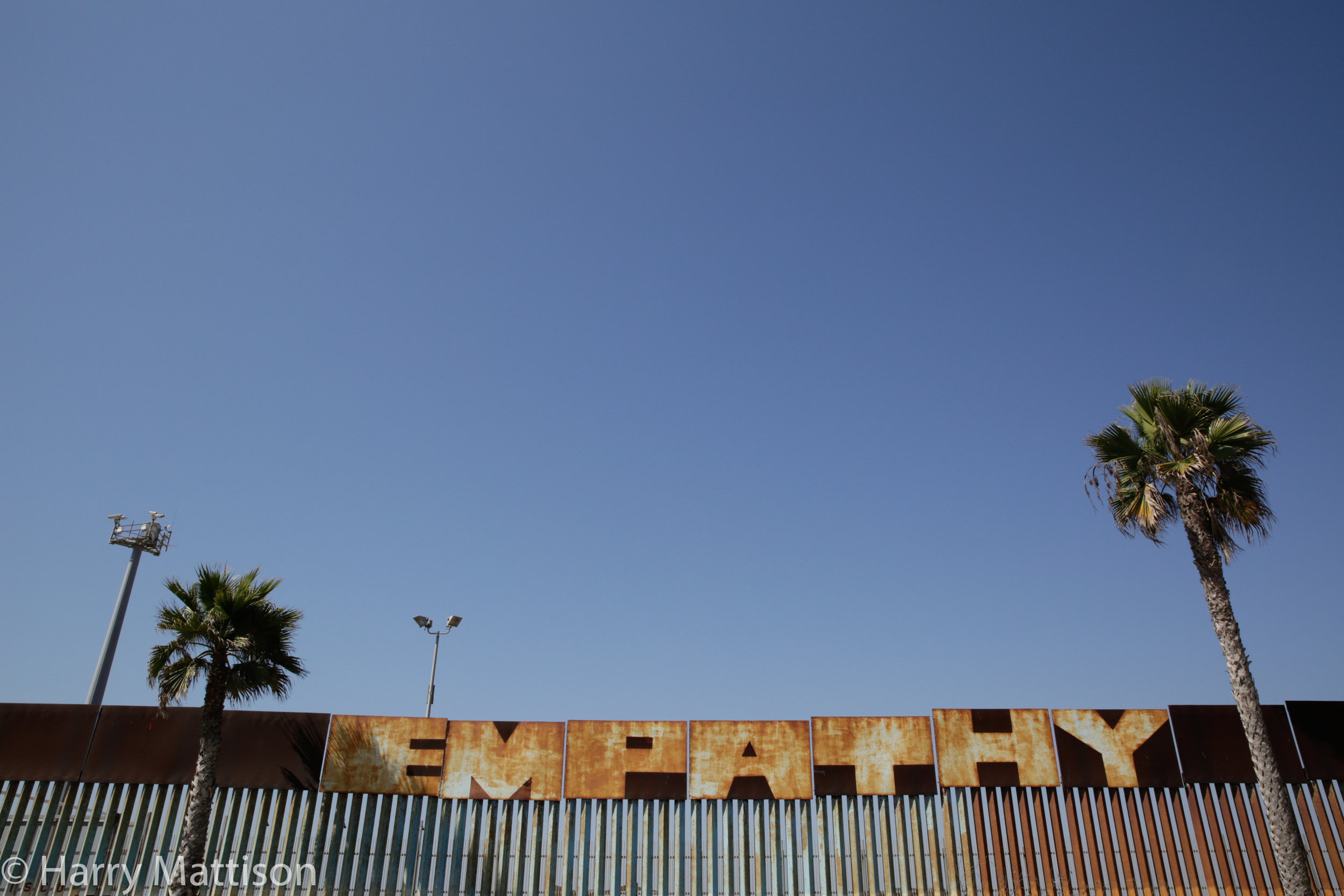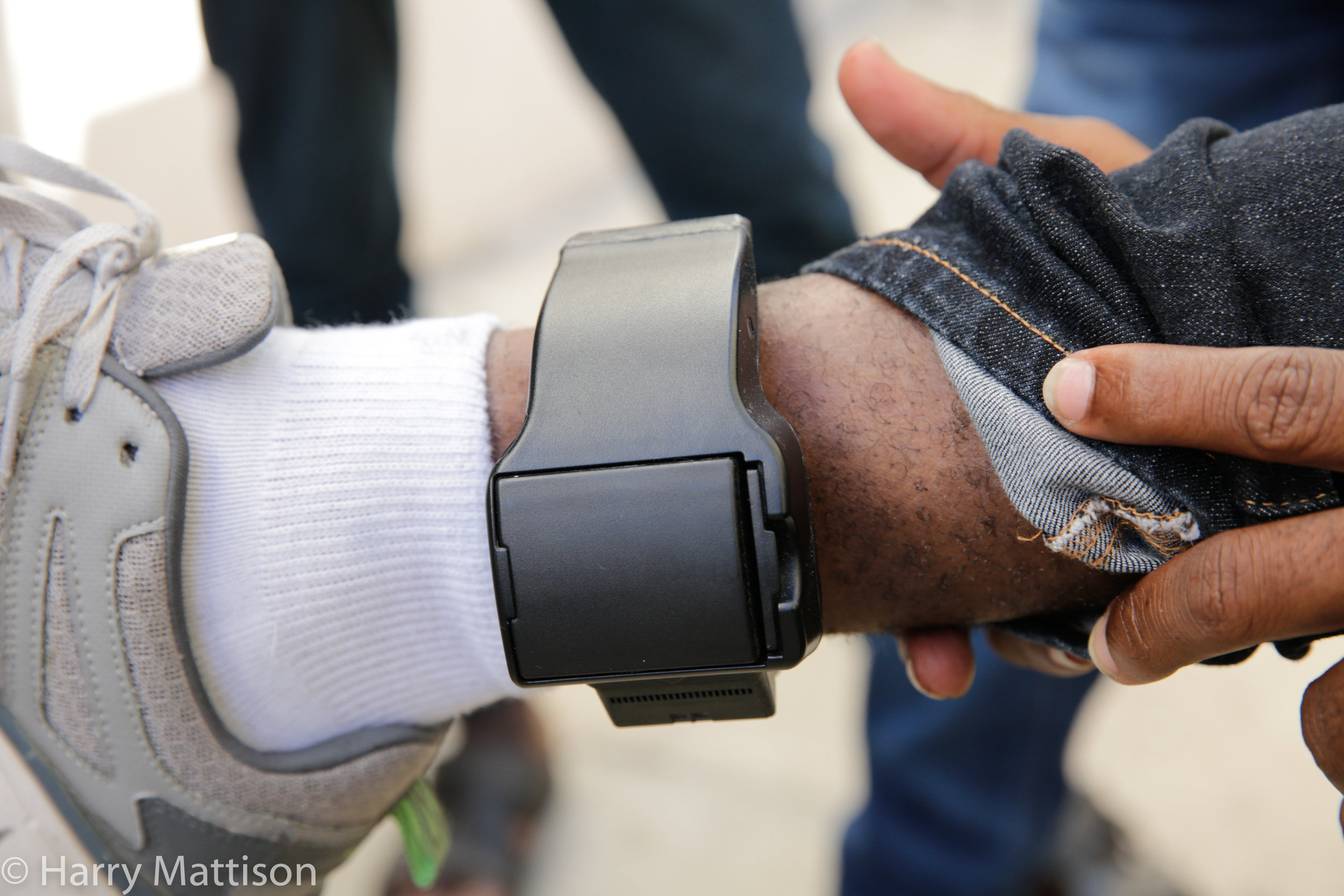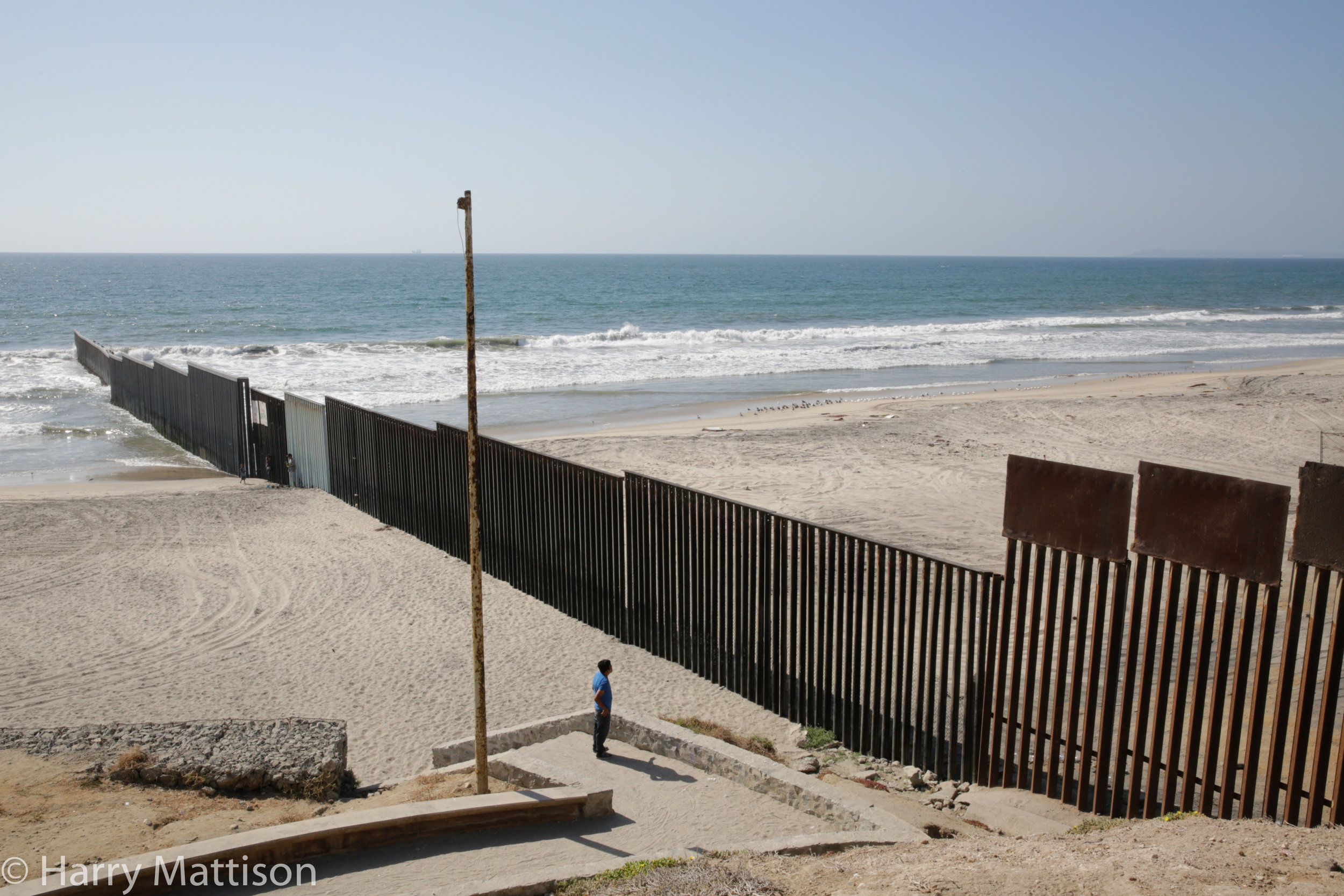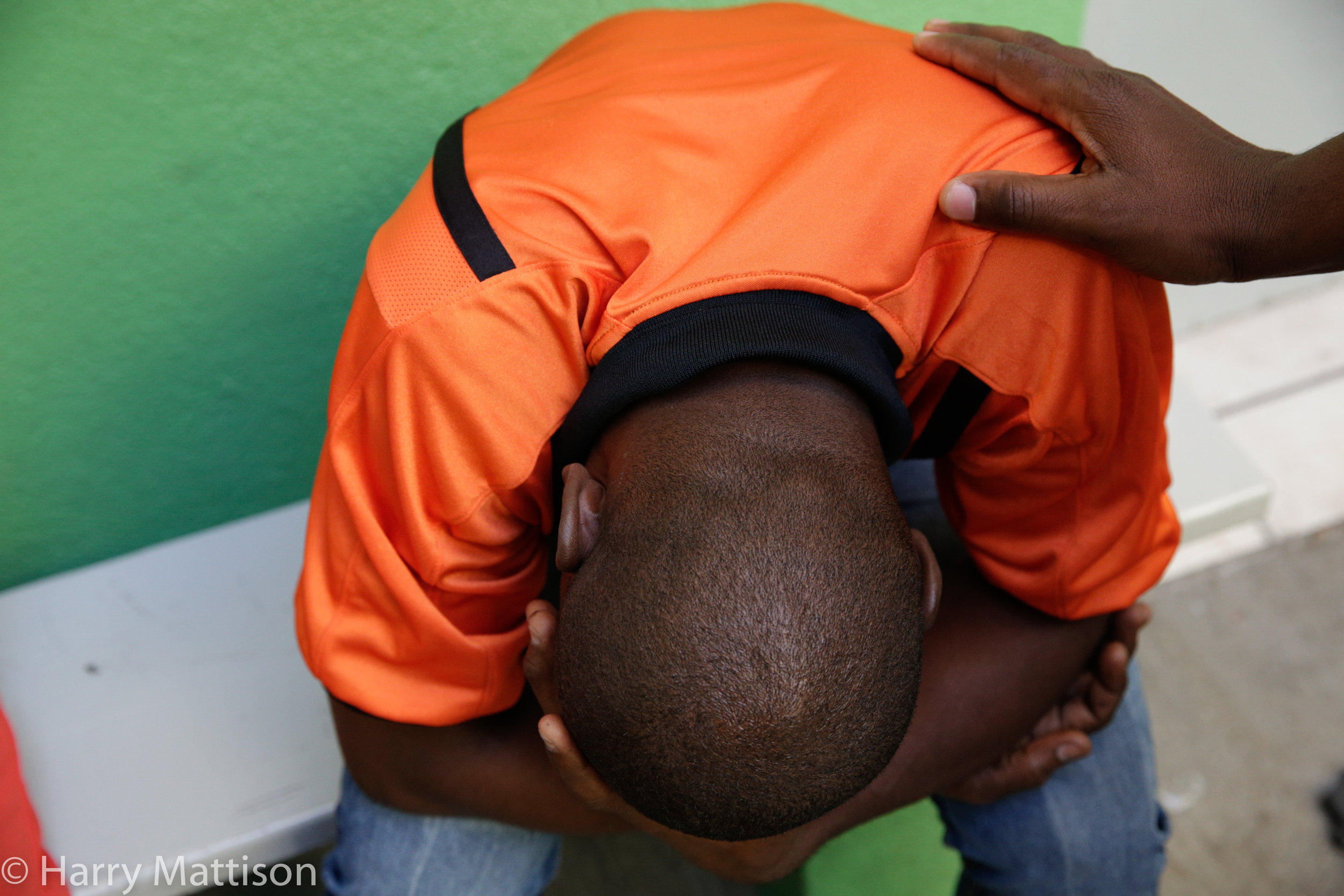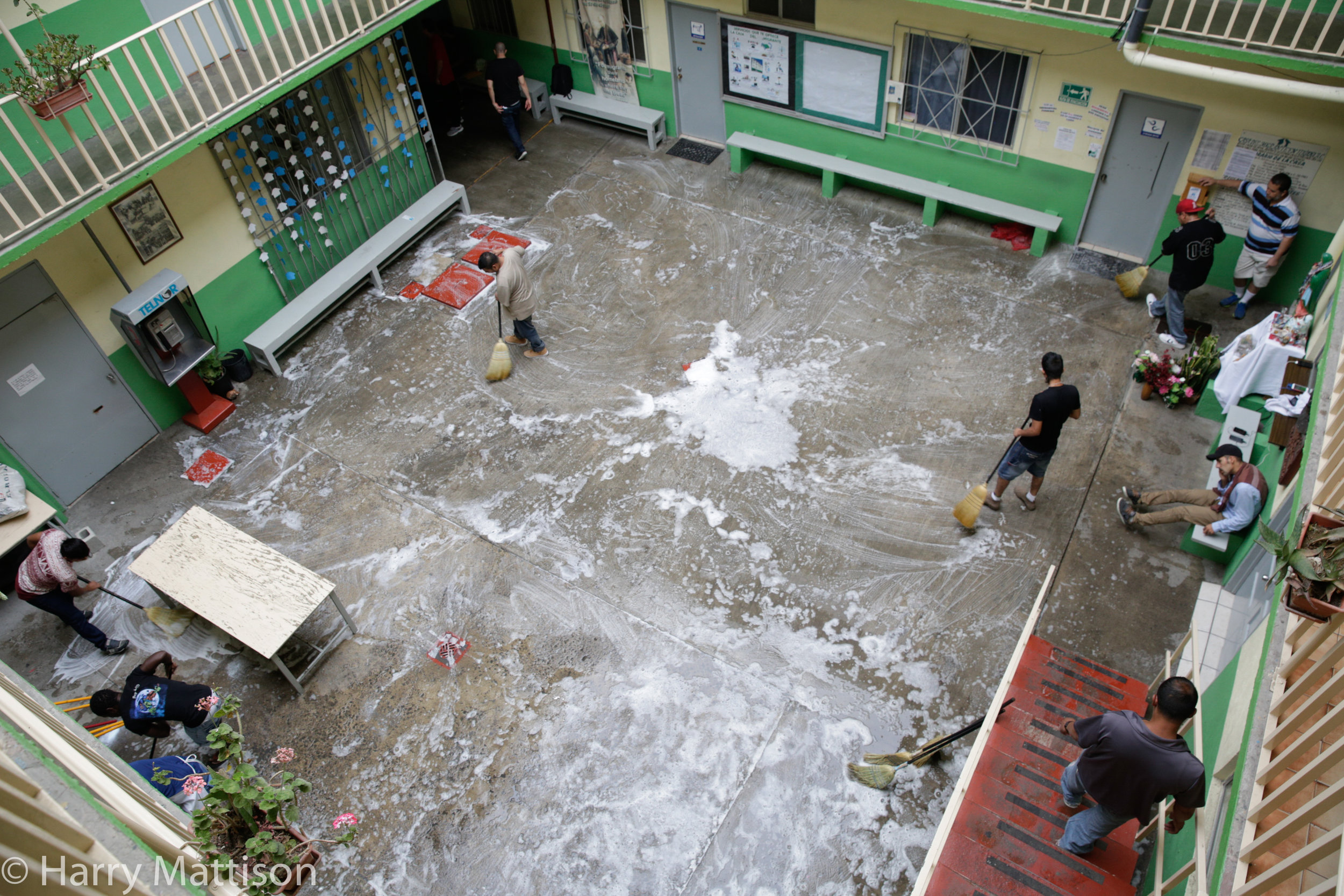At the Casa del Migrante
A Tijuana shelter hosts migrants in limbo.
———
Text and Photographs by Harry Mattison
A Haitian migrant beneath a photograph of Pope Francis at the Casa del Migrante.
They come from Haiti, from Mexico, from Central America, and from as far away as Africa–-Ghana, Angola, Cameroon. They have traveled thousands of miles to this place, the Casa del Migrante, a shelter run by Scalabrinian priests in the border town of Tijuana, Mexico. The city has long been a gateway for migrants from Latin America. Now, in the summer of 2016, in the final months of the Obama Administration, new migration routes have brought long-distance travelers from around the world to Tijuana by the thousands. Most will seek asylum, in vain, at the San Ysidro crossing. I have come here to visit a friend, but the unfolding crisis convinces me to stay on as a volunteer. For a month, I help clean and serve food for new guests.
The migrants arrive every day, with few belongings, in groups of ten or twenty, usually just before midnight. They are young and tired, dirty and scared. They ask for water, bread, a place to sleep. They ask for medicine. The missionaries provide all of these things; they provide legal advice, too, medical care, and help finding work in Tijuana. Some of the guests are on their way to the border, only a few miles away. This is their last stop, after journeys across numerous borders, by car, plane, boat, and foot. They have fled extreme poverty, violence, famine, and political persecution in their home countries.
They leave before dawn, in the dark, and head to the crossing where they will wait in long lines to see immigration officers. At this moment they must be very careful about the words they use. Phrases like “economic refugee” or “seeking a better future” will kill their chances.
Some of the migrants will be given appointments with officers for later and made to wear GPS devices on their ankles--they look like manacles--so that the Department of Homeland Security can track their movements. In the end, almost all asylum seekers are turned away.
The disappointed ones return to the shelter in droves. What will they do? Most of the travelers are young men, but there are families, too, and couples. Some will end up homeless, adrift on the streets of Tijuana, for there are not enough beds in the shelters. Others will risk illegal crossings, through desert lands that have claimed the lives of thousands. Along the border fencing, humble crosses bear the names of the dead and honor their journeys.
Still, the migrants keep coming. They are not infrequently joyous to be so near their goal. The most tenuous of plans give them hope. One man has been robbed of his passport and papers, but he has the telephone number of “Kenneth” a lawyer he has never met, scribbled on piece of cardboard he carries in his pocket like a talisman.
Another man takes me aside. “I’m sorry to bother you but I have a question,” he says. “Is true if my girlfriend is pregnant and we get in and she has the baby in the US we will all be given citizenship?” It pains me to disappoint him.
On the US border wall near San Diego someone on the Mexican side has written the words, “We too have dreams.” Further on a single word in large block letters reaches skyward: EMPATHY.
Issue 1
Publication Date: May 17
Harry Mattison is an American photographer from New York City. Between 1977 and 1996, he worked as a photojournalist in Central America, Lebanon, and South Africa. His photographs have appeared in Time Magazine, The New York Times, Le Figaro, Paris Match, Der Spiegel, and many other publications. In 1982, he was awarded the Robert Capa Gold Medal for photography. In that same year, he published El Salvador: Work of Thirty Photographers, co-edited with Susan Meiselas. He now teaches at the Maryland Institute College of Art.
